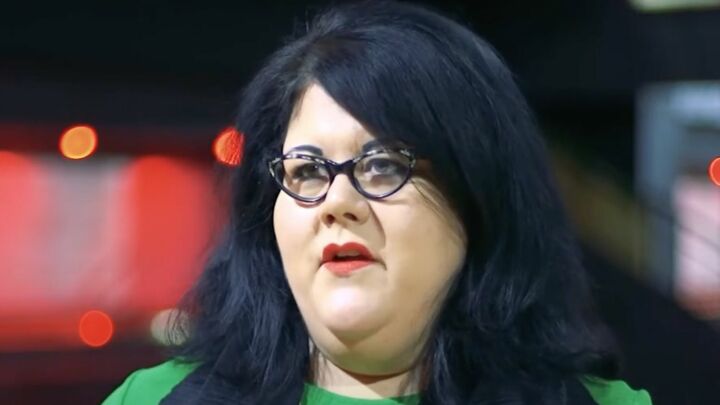Why The Face no longer fits
Who needs a 'style bible' when anything goes?

Want to read spiked ad-free? Become a spiked supporter.
When The Face became a runaway success in the 1980s, it was read as a barometer of changing times. Now that owners Emap have announced that the May 2004 issue will be the last before The Face goes into suspension pending re-launch, re-sale or possible closure, does this mean that times have changed again?
Published in May 1980, the first issue of The Face featured tonic-suited, gap-toothed Jerry Dammers on the front cover, and the tone of the publication was set by a substantial article on Dammers’ left-leaning enterprise, Two-Tone Records. In layout and design, early editions resembled the NME, which Face owner and publisher Nick Logan had previously edited. The Face was not yet The Face.
Born in 1947 Logan was old enough to have been an Ilford Mod, but sufficiently young at heart to have edited teen weekly Smash Hits. He must have known there was a gap in the market or he would not have re-mortgaged his flat to launch The Face (‘I wear second-hand clothes and eat cheaply’, the fledgling publisher told Music Week). But if and how The Face would meet or constitute a new demand remained unclear until 1981, when Logan hired freelance graphic designer Neville Brody, 10 years his junior. In Brody’s hands graphics became the lead instrument rather than just a backing track to mostly-music-journalism.
If Logan’s Mod background sensitised him to style and prompted him to think in terms of a style-led publication, it was Brody who came up with the particular style that could connect with an up-and-coming generation of readers. All they needed now was content, and this soon emerged in the form of ‘the cult with no name’, the style-fixated cognoscenti referred to elsewhere as New Romantics. As soon as these three elements gelled, The Face was unstoppable: ‘magazine of the year’, 1983; ‘the world’s best-dressed magazine’, Campaign’s ‘barometer of pop style’, subject of a retrospective exhibition at the Photographers’ Gallery, 1985.
There were re-designs (the first by Brody himself as early as 1984), and makeovers, with the magazine reinventing itself in the image of emerging trends such as rave culture and Britpop, under the aegis of new editors Sheryl Garratt and Richard Benson, respectively. Although it outlived onetime rival Blitz (near-peer i-D magazine has now outlasted them both), and spawned a whole rack of Logan-owned publications such as Arena, Arena Homme Plus, Deluxe and Frank, The Face never regained the authority it enjoyed in the mid-1980s.
By the mid-to-late 1990s, there was writing on the wall. Circulation dipped between 90,000 and 70,000 (when Emap pulled the plug it had fallen to 40,000, with sales of only 25,000 in the UK); the art department decamped to Dazed & Confused. Successive editors created a typology of the times – Soft Lad, New Sensible, the Flexi – but failed to find the mood of the moment. Logan sold a stake to Conde Nast, then bought it back, before selling again, this time to Emap, for £16million. (*)
The fall from grace of The Face has been ascribed to various phantom factors: Metropolitanism, which probably says more about the parochialism of those levelling this accusation; the internet, which is to ignore the co-existence of print and online publications during the past decade. Perhaps there is more to the suggestion that The Face was faced with the consequences of its own success: not only other magazines but also broadsheet newspapers have adopted a format that was once exclusive. But even this is not sufficient explanation – imitation means competition, yes, but it does not determine that the originator shall be overcome by its camp followers.
The title of a publication may tell us something about the times of its rise and demise; or so it should, if it is a worthy title. The Face was derived from the Mod idea of a player on the scene whose ability to operate as such depended on the knowingness of his style. Hence the name of Logan’s near neighbours and contemporaries, the Small Faces. The Face magazine was therefore aimed at readers looking to establish themselves by displaying their superior knowledge of style and culture – half-way between super-consumers and performance artists. Moreover, in meeting this need and answering this ambition, The Face itself became a key player in the scene which it helped to create.
With its emphasis on consumption and self-expression, The Face turned its back on political battles over production. The period of its initial success occurred between the steelworkers’ strike and the miners’ strike, but the space it inhabited was deliberately irrelevant to both. Not that The Face preached submission to what was becoming Thatcher’s Britain, but it helped turn revolt into style and, subsequently, defeat.
The influence of The Face mitigated against understanding the world as well as changing it. Borrowing from French semiotician Roland Barthes, cultural critic Dick Hebdige identified it as a new kind of text, consumed by readers ‘cruising’ between words and images and gaining pleasure from the juxtaposition of the contradictory – unlike previous generations of print publications, whose content was intended to be read and inwardly digested. Thus the epistemology of The Face, its take on the world, was always caged by irony: it deliberately did not add up.
In both these respects, The Face suggested ‘there is no alternative’, even before Margaret Thatcher had said it herself. At the same time, however, it retained high expectations of the consumer, and of consumption itself. By reading The Face and experimenting with the styles described in it and by it, you too could become a face, a player in an emerging club scene, a legend on your local high street. This could be achieved by your display of universal and authoritative knowledge of life, as distilled into its synonym style, with The Face as your bible. With one hand The Face reduced social reality to the sphere of consumption, while with the other it tried to enable the reader to stand above particular patterns of consumption and to enjoy consumption in general.
The problem is that the narrow field of consumption cannot easily sustain wider horizons. The uber-consumer, The Faces to whom The Face was initially addressed, have all but disappeared in a context characterised by smaller and smaller niche markets and/or cultural identities. Thus the precondition for re-launching The Face is the identification of a specific market group. The irony is that 25 years into the club culture which The Face helped to launch, our capacity to stand out from any one club and move freely between them all, is more limited than before.
Andrew Calcutt is the author of Brit Cult: An A-Z of British Pop Culture, Prion Books, 2000.
(*) Correction: this article originally claimed that Nick Logan died of cancer in the late 1990s. In fact, Logan is alive and well. Apologies.
Celebrate 25 years of spiked!
A media ecosystem dominated by a handful of billionaire owners, bad actors spreading disinformation online and the rich and powerful trying to stop us publishing stories. But we have you on our side. help to fund our journalism and those who choose All-access digital enjoy exclusive extras:
- Unlimited articles in our app and ad-free reading on all devices
- Exclusive newsletter and far fewer asks for support
- Full access to the Guardian Feast app
If you can, please support us on a monthly basis and make a big impact in support of open, independent journalism. Thank you.






Comments
Want to join the conversation?
Only spiked supporters and patrons, who donate regularly to us, can comment on our articles.